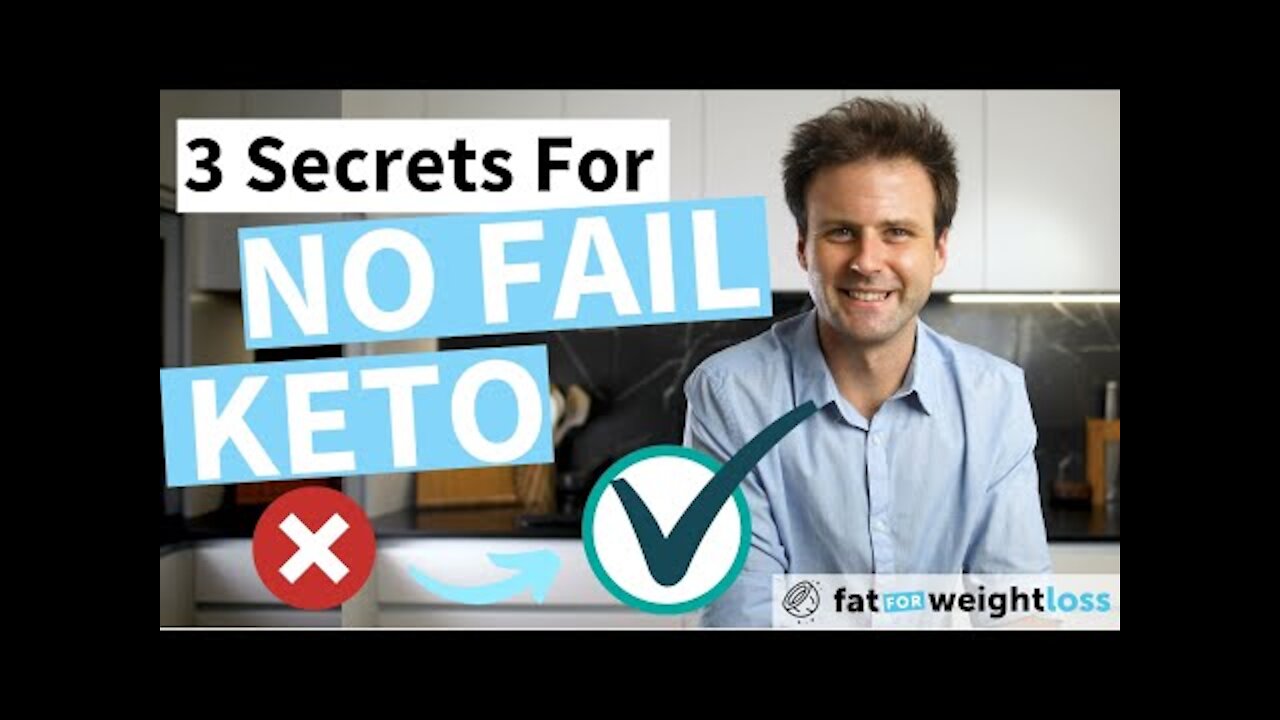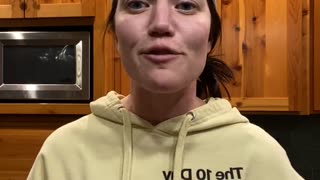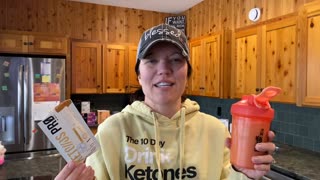Premium Only Content

3 Secrets For No Fail Keto (Don't Break These Rules)
Get Keto-Diet-Recipe Here:
Firstly, the ketogenic diet is not an unhealthy, unsustainable diet. People might tell you this, or you might have heard this from the media, but its total nonsense created by people who are frankly addicted to carbs. Deep down, those people still believe that carbs are the only source of energy, and without them, you’ll likely find it hard to get healthy.
If you don’t have enough carbs to feed your brain with energy, your body will create its own through gluconeogenesis. No carbs are necessary for this process. Fats and Protein are the only sources of nutrition that your body cannot create, although you can use fat as energy, your body can’t actually create it on its own.
Fat and protein are vital for every function in your body. But let’s dig into exactly which you should be focusing on to stay keto, and make keto a sustainable diet (since macro tracking and calorie counting isn’t always the answer).
The first and most important step to staying keto is to limit your carbohydrate content. If you make sure you’re not eating more than 5 per cent of your total intake of calories from carbs, your body will run out of glycogen (otherwise known as stored carbohydrate energy) and start generating ketones for energy. If you ignore everything else and just focus on carbs, you will eventually go keto.
You don’t need exogenous ketones, you don’t need MCT oil, you don’t need any shakes or powders to get you into a state of ketosis. Unfortunately, there is no magic pill, its either you’re in ketosis, or you’re out, and that all depends on your carbohydrate intake.
It doesn’t sound simple, but once you cut out bread, pasta, grains, rice, sugar and root vegetables such as potatoes and sweet potatoes, there isn’t much else that will prevent you from staying keto.
The only problem is that weaning yourself off those foods can be hard, for two reasons. You’ve probably become very accustomed to cooking with carbs, and reducing carbs can feel like coming off an addictive substance, specifically sugar, since it lights up your brains neuro network much like any other drug does.
So, figure out whether you’re an abstainer, or a moderator (in other words, can you tolerate abstinence, or do you have to come down slowly), to figure out if you go cold turkey off carbs, or whether you slowly go from low carb down into keto over the period of a few weeks or so.
So, if you didn’t get the memo, that was Tip #1 - Cut the carbs.
Once you master that tip, then I want you to focus on tip #2. Most people take a few weeks to get to this stage, so don’t rush it. Take your time, and you’ll be feeling better before you know it.
Tip number 2 is all about protein. Specifically, eating enough protein. Protein is important to keep lean muscle, but its more important to keep you feeling satiated without consuming too much overall food, also known as energy.
To work out how much protein you need, you’ll need to go over to my website and enter your details into my macro calculator. This will figure out how much protein you need, and it will give it to you in either the raw weight or cooked weight. If you’re a vegetarian or need to avoid meat for some particular reason, you’ll likely have to track your macros for a few days using an app such a cronometer to ensure you’re getting enough protein without going over your carb limit.
When you combine fasting along with a ketogenic diet, you’re much more likely to be able to tap into your fat storage system. If you cannot fast for medical reasons, then just focus on tips 1 and 2, but if you’re having trouble fasting, or you find it uncomfortable, it likely means you’re not fat adapted yet. This means you’ve broken rule number 1, and you’re consuming too many carbs.
My ideal fasting protocol is this: Try intermittent fasting first. Work your way up to 16 hours fasting and see how you feel. If you’re tempted by carbs, or you have a bad feeling you might get tempted to stuff your face full of whatever is in the fridge after work, once again, it means you’re eating too many carbs (or there are bigger issues at play, which can be assessed by a nutritional expert). Back off the fasting and just go back to number 1 and two.
I know most of you are already intermittent fasting, so this section is for you. I want you to experiment with 24-hour fasting. This means that during a fast, you’re allowed to drink water, electrolytes, black coffee and black tea, and that’s it. Technically coffee and tea also break a fast, but it only breaks the digestion aspect of fasting. We’re aiming for fat burning protein recycling autophagy, so including 1 or 2 24 hour fasts during a week will be ideal.
-
 27:40
27:40
Stephanie Mielke
4 years agoKeto Mom Steak Secrets with Q+A
24 -
 7:11
7:11
Stephanie Mielke
4 years agoKeto Mom How to break a reboot
11 -
 4:28
4:28
AttainableDreams
4 years agoSECRETS TO SOBREITY!!!
78 -
 2:00
2:00
MJPENNEY.com - DOMINATE your Business
4 years ago $0.03 earnedTraffic Secrets
1K1 -
 2:30
2:30
Dogs with ideas
4 years agoMars secrets
110 -
 10:21
10:21
Not My New Normal
4 years ago $0.01 earnedBreak Free From The Matrix Once & For All With These Tips
1671 -
 0:26
0:26
bushelsperacre
4 years ago $0.01 earnedHarvest Secrets
971 -
 0:20
0:20
vincebautista
4 years ago $0.01 earnedDance break
107 -

FusedAegisTV
17 hours agoStreet Fighter 6 FINALS, CS2 Semifinals | $1,250,000 | Riyadh, Saudi Arabia EWC 2025 !estv
46.4K7 -
 40:42
40:42
SouthernbelleReacts
1 day ago $0.11 earned😂 American Pie (1999) Reaction | Iconic Teen Comedy, High School Chaos & 90s Nostalgia 🥧
37.3K4